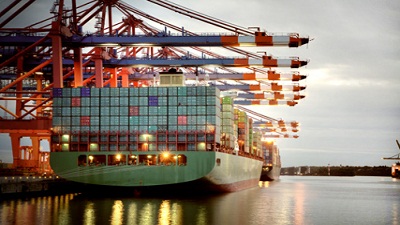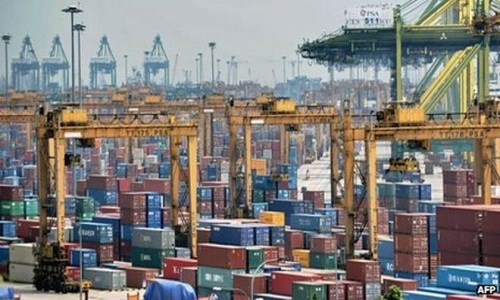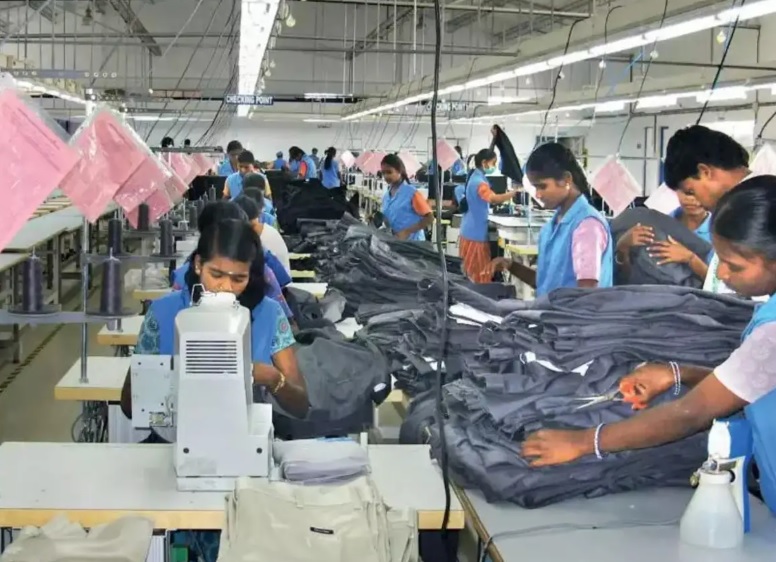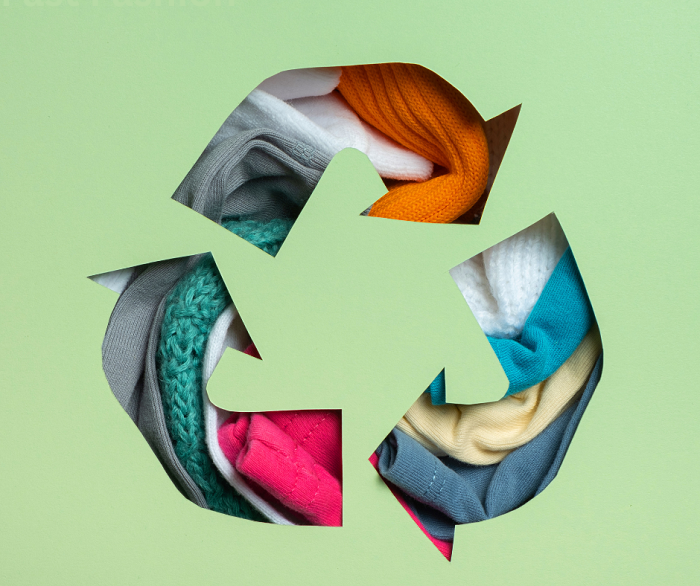FW
"A BSI Global Supply Chain Intelligence Report cites increasing number of terrorism incidents as major supply chain risk. The report is based on data from BSI’s Supply Chain Risk Exposure Evaluation Network (SCREEN), which provides continuous evaluation across 22 proprietary risk factors and 204 countries. BSI’s 2015 SCREEN data and analysis reveals a clear picture of the changing global threat landscape and how this varies by country, continent, and industry sector."

A BSI Global Supply Chain Intelligence Report cites increasing number of terrorism incidents as major supply chain risk. The report is based on data from BSI’s Supply Chain Risk Exposure Evaluation Network (SCREEN), which provides continuous evaluation across 22 proprietary risk factors and 204 countries. BSI’s 2015 SCREEN data and analysis reveals a clear picture of the changing global threat landscape and how this varies by country, continent, and industry sector.
BSI’s report noted a number of cross-border issues that threatened supply chains across the world in 2015. This include: damages caused by cargo theft; increased number of terrorism incidents contributed to billions of dollars in losses to global shipping companies; an influx of migrants in Europe that harmed supply chain integrity across the continent; economic downturns in Argentina, Brazil, and China; and issues of political transparency that drove social unrest in Africa and Central America. Extreme weather events, including many attributed to the El Nino phenomenon, caused supply chain disruptions and threatened business continuity in multiple regions. There were also several industries that were plagued by poor enforcement of labour regulations, allowing for significant rates of child or forced labour in Argentina and India, among other nations.
Security concerns

The report said, nearly AUD$30 billion was lost due to cargo theft worldwide in 2015 from a variety of supply chain threats, predominantly driven by security concerns. South Africa has seen a 30 per cent increase in cargo truck hijackings over the last year, with thieves using high levels of violence and switching from targeting only high value goods to also targeting lower value items. Daring vehicle shipment thefts have become increasingly commonplace in China, with a recent series of in-transit vehicle thefts occurring along the busy G45 highway. More sophisticated attacks were observed in India throughout 2015, where criminal gangs masterminded new techniques to steal goods without breaking customs seals to avoid detection – a major risk for companies participating in international supply chain security programs.
Terrorism and supply chain
It further said, in Europe, disruptions in trade caused by the ISIS terrorist group clearly highlighted the link between terrorism and the supply chain. Border controls in France following the November attacks in Paris are estimated to have cost the Belgian shipping industry AUD$4.6 million. Terrorist-linked smuggling rings were also identified to be colluding between Spain and the Middle East, the groups illegally transporting shipments of stolen electronics, drugs, weapons and other contraband. Elsewhere, the Jordanian trucking industry suffered AUD$990 million in lost revenue since conflict began in the Middle East in 2011.
In addition to theft, business continuity-related threats such as extreme weather events and political and social unrest, led to significant losses for individual companies and national economies last year. 2015’s top five natural disasters caused a collective AUD$33 billion of damage to businesses. In 2016, BSI has identified emerging health crises, such as the Zika virus, could also pose a significant threat to the global supply chain and may lead to work stoppages and protests similar to the supply chain disruptions seen in conjunction with the Ebola epidemic.
Labour issues
Coupled with labour unrest and factory strikes have also caused considerable financial damage across the world. Factory strikes in China increased by 58.3 per cent from the previous year due to pay disputes, as factory owners struggled to pay workers due to a slowing economy, leading to protests. The withholding of wages was cited as a major cause in 75 per cent of protests and generated losses of up to AUD$35 million in the footwear industry. Labour unrest is likely to continue in China in 2016, regardless of whether the economy improves.
Numerous cases of child and forced labour were exposed in 2015, highlighting the need for visibility into corporate supply chain to mitigate the risk of human rights abuses. Nearly 80 per cent of Argentina’s textile industry was found to be sourcing from unregulated facilities, where forced, child labour and poor working conditions are common. BSI also noted an increase in the risk of child labour use in India due to the existence of loopholes in labour reforms approved in 2015. In response to these and other recent concerns, European countries and the United States last year moved to pass laws mandating reporting on corporate social responsibility issues in corporate supply chains.
Threat potentials in 2016 include:
The study also listed out certain threat potentials for 2016. These include: Global cargo theft cost estimated to grow by a further AUD$1.3 billion in 2016; increased concerns in China, Germany, India, Mexico, South Africa, and US; continued tensions in South China Sea predicted to lead to further protests and disruptions; conflict in Syria; migrant crisis in EU to lead to port disruptions; EU/Schengen border controls predicted to have far-reaching impact; labour unrest in China, as a slowdown in the economy continues; La Nina and other weather phenomenon; health crises due to Zika and Ebola etc.
Bangladesh is drawing the attention of global buyers for high-end denim. Rising costs in China have created an opportunity for Bangladesh to grab a share of the denim segment. Bangladesh now produces more value-added products. It targets denim exports worth $7billion by 2021, when the country's total garment export is expected to cross the $50 billion mark.
Price is the advantage of Bangladeshi denim makers that helps them retain the top exporting position in the EU and maintain the third position in the US. Global brands have started exploring the sourcing potential of handloom denim fabrics dyed with natural indigo from Bangladesh.
In recent years a few companies in Bangladesh have started cultivating natural indigo and this indigo is mainly used in dyeing high quality, handmade products for high end and luxury markets. Denim made on handlooms is softer than mill made denim, has a unique texture and breathes well and helps feel cool in summer and retain body warmth in winter. Organic cotton and natural indigo dye are used for producing the handloom denim fabric.
Sustainable fashion companies in Germany are working with a company in Bangladesh to produce hand-woven indigo denim fabric.
Adilabad, Telengana, has a huge cotton processing industry. It’s considered to be the single largest cotton trading center in Asia with a turnover of over Rs 5,000 crores. As many as six new cotton ginning factories will be added shortly.
In the last few years, five of the biggest ginning and pressing units in town had to be closed down because of huge losses owing to the recession and the consequence of successive crop failures. This had an impact on the growth of the processing industry. Owing to growing competition and decreased productivity and yields, ginning factories with huge processing capacities had faced bad times over the last few years.
Now things are looking up. Units will get a concession in payment of Value Added Tax (VAT). VAT is subsidised at 100 per cent for a period of five years from the date a mill starts processing operations. New units have smaller processing capacities and hence will be viable as the quantum of arrivals of cotton will suit their needs unlike the closed units which boasted of huge capacities.
In the last few years, the processing industry which was mostly concentrated in Adilabad town and Bhainsa saw an expansion in terms of spread in area. Processing units opened almost everywhere in the district in order to capture the local produce.
China is making efforts to promote the creative design talent of silk docking enterprises and enhance corporate creative design capabilities. Silk was first made by the Chinese about 4,000 years ago.
According to legend, the first silk thread was made when a Chinese empress was sitting under a mulberry tree, and a cocoon fell into her tea; she noticed the strong, silky threads of the cocoon uncoiling. It is said that the empress then experimented with silkworms and developed the use of silk in weaving around 2400 BC.
Silk soon became very important to the Chinese economy, and it remained a Chinese secret for thousands of years, due in part to the Great Wall of China. The Chinese traded precious silk fabric to the rest of the world via the Silk Road, an overland trade route from China through the deserts of Central Asia to the West. The secret methods of raising silkworms and making silk were brought to Japan in the third century AD.
Silk thread is made from the cocoon of the silkworm moth, a small moth whose caterpillar eats the leaves of the mulberry tree. The white cocoon is dropped into boiling water, and the silk thread is unwound. Each cocoon yields about 500 to 1,200 yards of silk.
‘Denim - Democracy in Fashion,’ a conference organized by Diagonal Consulting India recently in Ahmedabad recently saw an in-depth presentation of the global denim market and trends by J Berrye Worsham, President & CEO, Cotton Inc. At the conference, denim stalwarts were in agreement that the market has never been as good as the present time. Fashion weeks across the world are highlighting denim as an important trend. In India, denim industry is on a growth trajectory, with many of the major players increasing capacities. Demand for denim apparel is growing the fastest among all apparel segments in the country, with denim fabric makers finding it difficult to keep pace with the demand.
Speaking on the occasion, P R Roy, Chairman, Diagonal Consulting in India said India has witnessed unbridled growth in denim production in the last couple of years. Today, India produces 1.2 billion meters of fabric, this could soon touch 1.5 billion meters. Sharing his experience, S N Modani, Managing Director, Sangam, said his company will reach a production capacity of 60 million metres by the end of 2016, with a strong focus on exports. In a discussion Worsham and Aamir Akhtar, CEO, Lifestyle Fabrics- Denim, Arvind Mills talked about the challenges that the industry faces in terms of consumer preferences: athleisure over denims, sizing and fit concerns in an aging US population, concerns over stretch recovery, the increasing use of manmade fibres in denim, and more. Worsham said the India’s domestic market could well amend any recessionary trend for producers, however, Akhtar, said while the market is growing fast, as it matures, growth will slow down. Moreover, the market is not totally insulated with factors like cotton, forex volatility etc at place. These do not keep a denim manufacturer in the comfort zone for long. The preference away from denim is visible, though to a lesser extent, in the Indian market. Eventually, manufacturers will need to look at innovations and varieties to attract consumers.
Thailand is promoting its textile and garment industry with a focus on added value. The garment and textile industry sees an opportunity to take the next step into high-tech garments.
With new investment in innovation, garment and textile businesses could shift to value-added textiles such as disinfected bed sheets for hospitals and scrubs for personnel. Japanese investors have expressed interest in producing textiles for medical use in Thailand and making the country a regional hub for innovative garments and medical equipment.
Apart from elevating the market, Thailand is also working with Sri Lanka to create new investment in the sector. Some garment companies from Sri Lanka visited Thailand to meet their counterparts and explore investment opportunities. Sri Lankan investors are seeking Thai partners to help expand their business in the country as they see strong potential for Thailand to be the center of Asean, where demand is seeing significant growth.
This year the value of Thailand’s garment exports is expected to grow by at least 10 per cent. Switching to innovative products would help the Thai garment industry enter the upper market which has fewer competitors and a higher added value. Competition at the lower market has intensified with countries that have the advantage of low labor costs, such as Bangladesh, Vietnam, Myanmar, Cambodia and Laos.
The world's largest conference on sustainability in fashion, Copenhagen Fashion Summit will be held on May 12, 2016. The summit was first held in 2009 and again in spring 2012 and 2014. This year the fashion summit will attract international players from the fashion industry as well as experts, NGOs, opinion makers, media and politicians. It will hold discussions on the evolution of fashion industry in a world where new business models are required to tackle growing sustainability challenges facing the planet and its societies.
The theme of Copenhagen Fashion Summit 2016 is ‘Responsible Innovation’. Since major sustainability challenges face it, it is immensely important for the fashion industry to continuously develop and improve the way it functions and devise new solutions and business models.
With an emphasis on responsible innovation, Copenhagen Fashion Summit aims to be a catalyst for change. By gathering key players from the global fashion industry, who will share their knowledge and ideas on new and sustainable solutions, the hope is to inspire, motivate, and give tools to implement a sustainable mindset and create a brighter future for the fashion industry.
www.copenhagenfashionsummit.com/
Hong Kong and South Korea are jointly working to promote their fashion industries. Textiles will be given attention as they are the first step leading to the fashion industry. More emphasis is being placed on designer brands at the moment but company brands may also be promoted.
Both South Korea and Hong Kong have a strong tradition of manufacturing high quality fabrics. The fashion industries of both countries have the knowhow and experience to produce full lines and set the pace with worldwide fashion trends. Both are attracting a strong core of talented young people.
The joint effort will take responsibility for formulating policies, strategies and initiatives for the development of creative industries. Hong Kong designers will visit South Korea. It is believed these reciprocal trips will facilitate exchanges between the two countries. Cooperation with the Korean fashion industry will continue to increase.
The CEL Venture Complex is one of the latest projects for creative industries in Seoul. The Dongdaemun Design Plaza is the landmark of Korean fashion and design. Hong Kong has a variety of retail outlets--skyscraper malls and cubby-hole stalls, flagship stores and factory outlets, luxury chic and hip boutiques. Local designers such as Vivienne Tam, William Tang, Walter Ma and Lu Lu Cheung produce world-renowned creations.
Nandan Denim manufactures of superior grey cotton fabrics, khakis and denim plans to increase production capacity to 110 million meters per annum by the next quarter and become the country's largest denim producer. At present, it has a denim production capacity of 71 million meters per annum.
Out of a total capital outlay of Rs 612 crores for expansion, Nandan has already spent Rs 400 crores and the remaining Rs 212 crores will be spent in the next four or five months. The expansion program was funded through a debt of Rs 430 crores and internal accruals of Rs 180 crores. Besides denim, capacity, the company is also expanding its spinning and shirting segments. The company is increasing spinning capacity from 54 tons per day to 124 tons a day and yarn dyeing shirting capacity to 10 million meters.
The company exports denim fabric to over 28 countries. Exports will contribute about 30 per cent of the overall business in two years. Nandan Denim commenced operations in 1994 with the textile trading business and forayed into textile manufacturing in 2004. The company hopes to register a turnover of around Rs 1,400 crores in the financial year 2016-17.
www.nandandenim.com/
Proposed changes to Australia's wool selling system have been met with resistance from wool buyers and exporters. It is being discussed as government-and-grower-funded body Australian Wool Innovation (AWI) embarks on a restructure. Long-term AWI staff, including Jimmy Jackson and Rob Langtry, will leave the corporation in the middle of the year.
Review of the wool selling system began by AWI more than a year ago and considered dozens of submissions from wool growers and buyers. It says the aim is to modernise the system and reduce costs to wool growers, while also increasing transparency. AWI is consulting industry about the changes, and said it would bring together a panel of experts by May to drive the digital transformation. Further, a business case will be delivered to the AWI board by November 2016.
According to a wool buyer, Chris Kelly, from the National Council of Wool Selling Brokers said more than 90 per cent of buyers were against change. He said the current open-cry auction was already modern and based on pre-sale wool testing. Wool buyers and growers are also raising concerns about the loss of highly experienced wool industry stalwarts at AWI.












